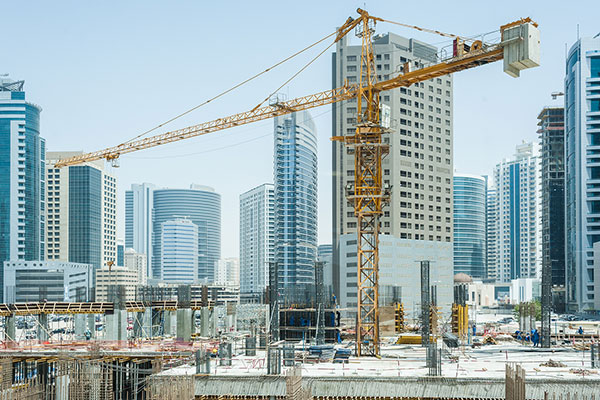
Engineering innovation 'can help mitigate construction risks'
DUBAI, June 21, 2018
Technological innovation in engineering, such as building information modelling (BIM) could contribute in a number of ways towards mitigating construction risks and reducing project liability, including safety, planning and execution risks, said the latest sigma report from Swiss Re.
The report, entitled "Constructing the future: Recent developments in engineering insurance," stated that BIM, a digital process to design, construct and operate new buildings or infrastructures, where all the involved parties use the same multidimensional digital model, could foster efficiency gains and help mitigate physical and financial risks in construction through several ways. These include:
*Planning for and operating safer buildings - A set of rules, based on compliance regulations and safety-related best practices, can be formulated and coded into BIM software.
*Helping to limit the chance of negative project events - BIM systems, integrated with construction management software, can streamline cost and time estimation of jobs and reduce or eliminate delays.
*Making construction projects more environmentally friendly.
*Creating a digital ‘memory’ of the building - BIM can record all aspects of history and operation, including problems which have occurred in the past and how they were resolved. When changes and alterations need to be made later in the lifecycle, the BIM model can guide the designers and contractors, who may not have been involved in the initial design and construction.
The sigma report also highlighted that the use of robotics in construction could help reduce human error and improve safety, accuracy and speed, while using a drone to take measurements and carry out surveys could reduce accident risks and save time, especially for buildings that are taller and more complex.
"Using a robot, for example, would eliminate the need for humans to work in dusty, noisy and difficult to reach locations. Similarly, prefabrication, (ie taking work traditionally completed onsite into a more secure and weather-proof environment), can lead to higher quality workmanship and safer working conditions, as well as reduce the need for maintenance and lower the risk of human error," stated the report.
Meanwhile, the use of sensors and real-time monitoring with data analytics could promote pre-emptive maintenance and lower the risk of mechanical breakdowns and reducing potential operational downtime, it added.
The sigma report however, also highlighted some of the pitfalls of tech innovation even as it brings reduced risks in certain areas.
Sensors work well in residential areas, but not as much in commercial properties or construction sites, where it may be difficult to differentiate between dust and smoke, or between hot weld and a fire, stated Swiss Re in its report.
Increased digitalisation, meanwhile, brings with it new types of risk. Cyber security breaches, posed not only by viruses, malware and ransomware, may disable and disrupt systems and bring significant legal, financial, reputation and business interruption risks, it stated.
“Remotely accessible systems, like BIM, project management software and autonomous vehicles can create opportunities for cyber criminals to breach defences. Data from integrated robotics that assist in builds, drones that monitor worksites and IoT technologies could be vulnerable without their owners’ realising it,” said the reinsurer.
According to Swiss Re, the tech innovation can also change the nature of traditional perils.
The use of pre-fabricated building modules create unique logistical challenges, while the adoption of high-value electronic and computer equipment in construction and engineering could affect the potential scale of damage in the event of an accident, it stated.
“The expansion in insurance coverage to include more financial-related/non-damage risks may mean that even though the frequency of losses may be permanently lower going forward, the severity of claims might remain significant,” said the Swiss Re report.
This is especially the case as global industries become increasingly interconnected, reflecting the higher potential for losses from the same incident to accumulate, it added.-TradeArabia News Service







